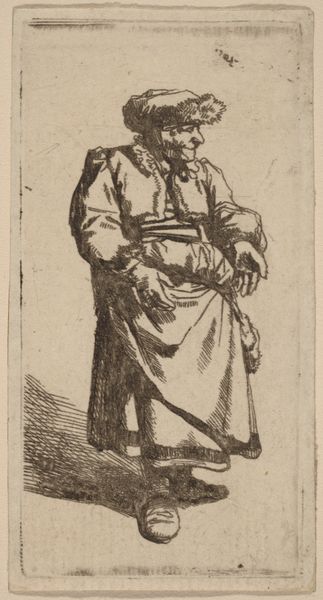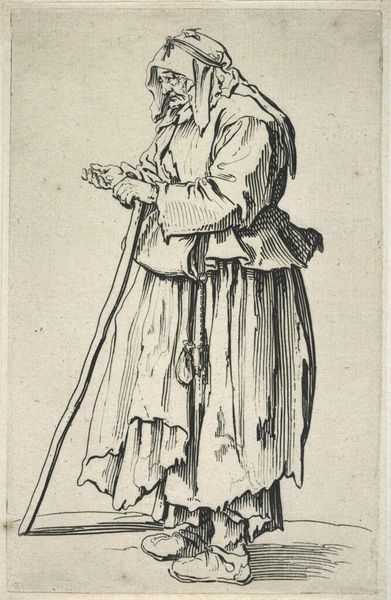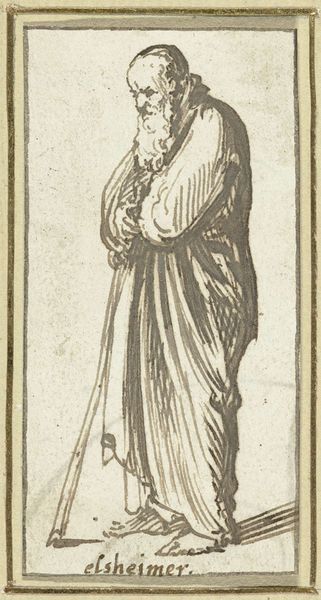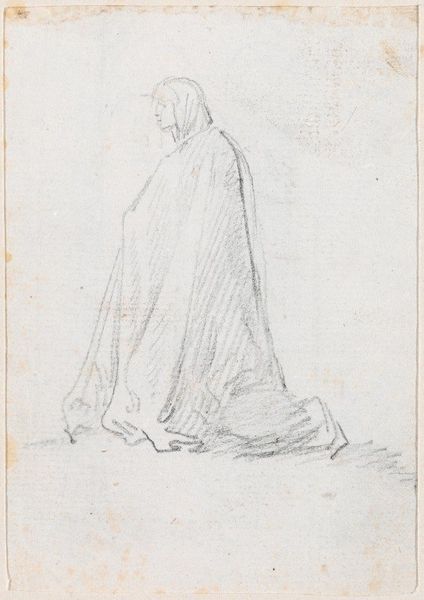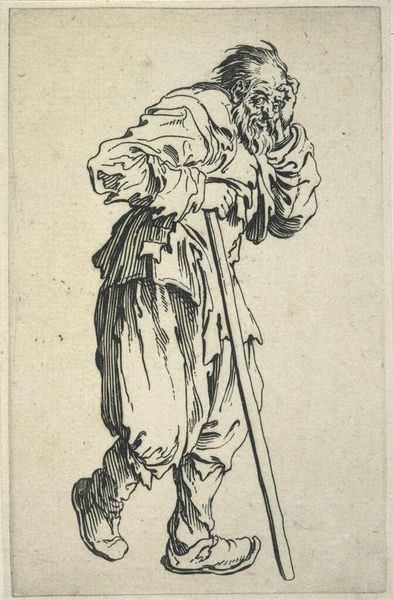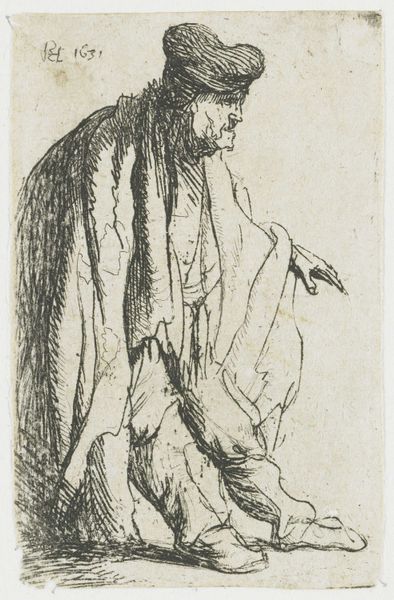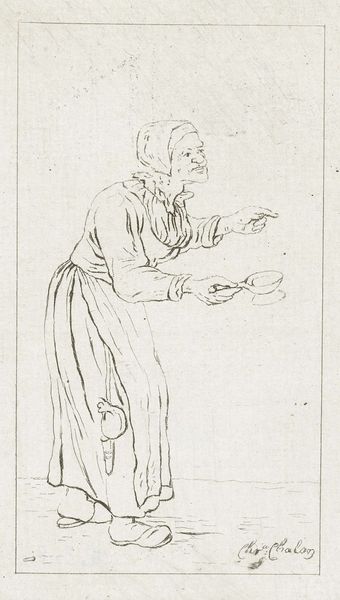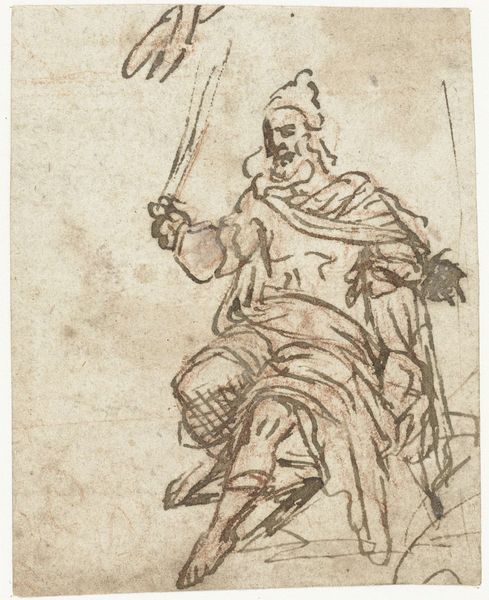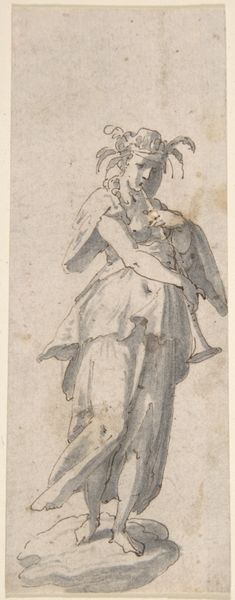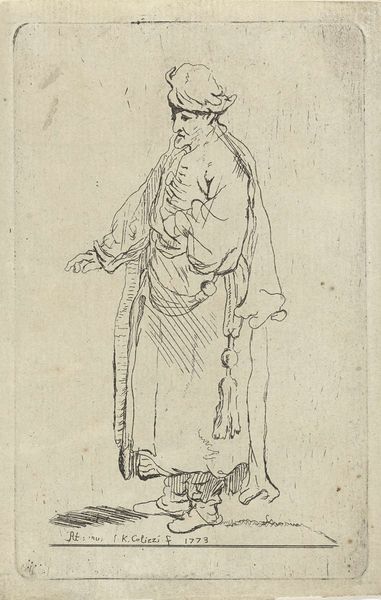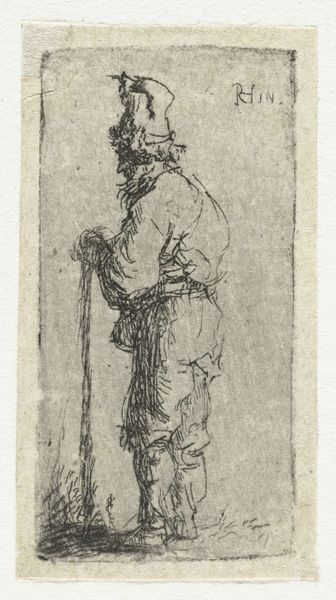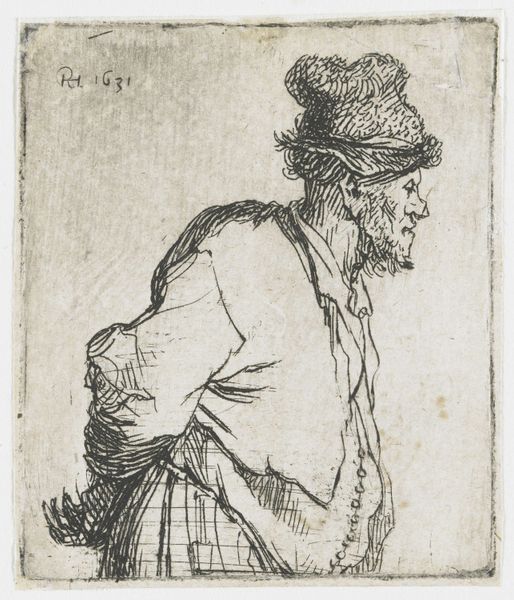
drawing, ink, pen
#
portrait
#
drawing
#
baroque
#
pen sketch
#
figuration
#
ink
#
pen
#
genre-painting
Dimensions: height 123 mm, width 80 mm
Copyright: Rijks Museum: Open Domain
Curator: Here we have a drawing attributed to Harmen ter Borch, titled "Vrouw met mand onder de arm lopend naast een kind," or "Woman with a basket under her arm walking next to a child." It's rendered in pen and ink, likely around 1649. Editor: It’s so quick, so light! Almost ephemeral. You see that heavy dress and basket and expect drudgery, but it feels… like a stolen moment, doesn't it? Curator: Precisely! The apparent speed contributes to its power. Consider the social context. Ter Borch came from a wealthy family, so genre scenes were of much interest to the wealthier clientele looking for depictions of the lives of the working class. Notice the economical use of line to convey textures and forms? He focuses our attention on their garments. Editor: It's intriguing how he uses the pen almost sculpturally, etching out the volumes of their figures and the folds in the heavy fabrics. Those are definitely working clothes, aren’t they? You can practically feel the weight of that basket pressing on her arm. Curator: Absolutely, and while it is seemingly informal, consider how the clothing marks status, reflecting sumptuary laws. There’s an entire economic system embedded in the lines of that ink. The work also evokes daily routines that we would consider gendered labor within 17th-century Dutch society. Editor: Looking at it, I wonder what's in the basket? What's the story there? Is she headed to the market, coming home? Maybe it is filled with yarn or thread destined for textile production at home, essential labor rendered almost invisible. And what does the child think? Is it cold, is the basket heavy to carry? So many stories suggested, so few answers given! Curator: I agree. The very open-endedness encourages questions about what is shown and not shown. Editor: I am left thinking, art historians always invite viewers to consider not just what's on display, but to see more in what's been cast into shadow! Curator: That is what I'm thinking about here, too. And considering Ter Borch’s method and subject situates "Vrouw met mand" directly into period debates about gender, labor, and class that we must keep unpacking.
Comments
No comments
Be the first to comment and join the conversation on the ultimate creative platform.
